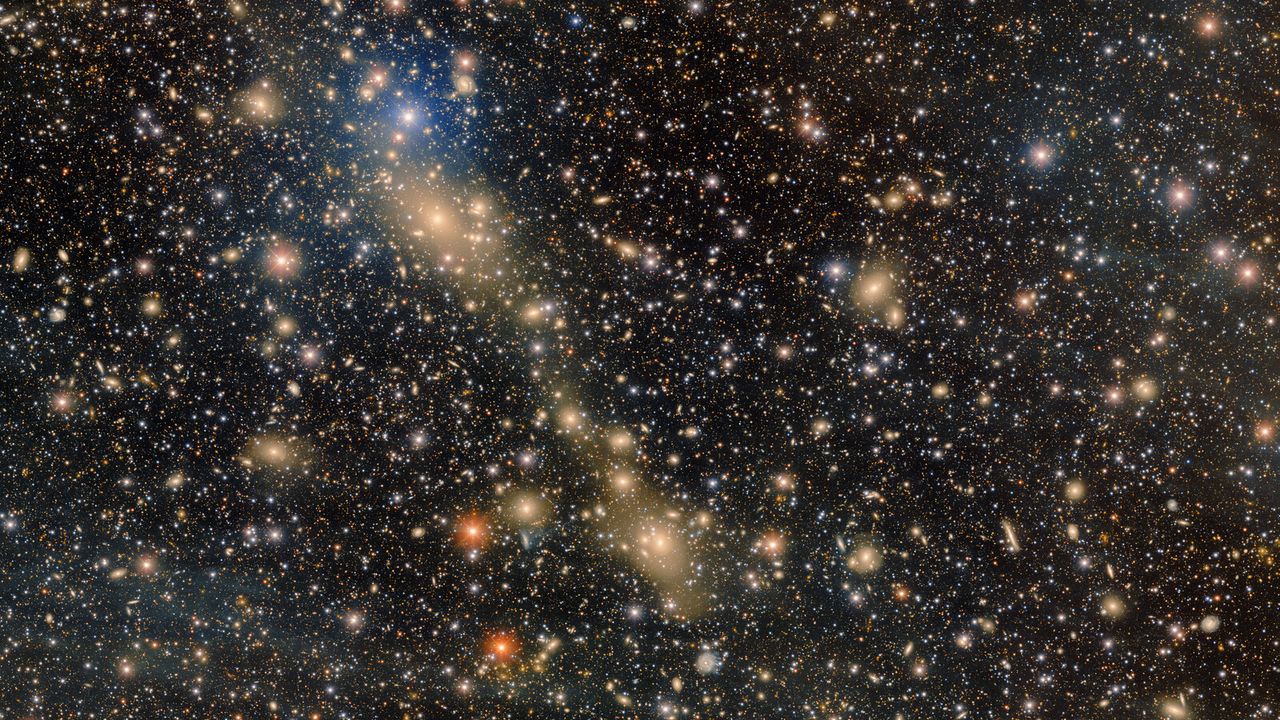Now Reading: Scientists Discover Star Bridge Linking Two Galaxies
-
01
Scientists Discover Star Bridge Linking Two Galaxies
Scientists Discover Star Bridge Linking Two Galaxies

Fast Summary
- astronomers observed two massive galaxies locked in a cosmic tug-of-war in the galaxy cluster Abell 3667, located 700 million light-years from Earth.
- A faint, million-light-year-long bridge of stars connecting thes galaxies has been detected for the first time in a nearby galaxy cluster.
- The bridge consists of intracluster light (ICL), made up of stars stripped from their original galaxies by gravitational forces.
- Observations where made possible by stacking over 28 hours of data captured with the Dark Energy Camera at the Cerro Tololo Inter-American Observatory in chile.
- At one end is IC 4965, a lenticular disc-shaped galaxy; at the other is JO171, a “jellyfish galaxy” undergoing gas stripping that disrupts star formation.
- This finding provides insight into dark matter distribution as ICL often mirrors dark matter’s spatial patterns.
- The upcoming Vera C. Rubin Observatory will enhance such discoveries through detailed mapping of similar phenomena.
indian Opinion Analysis
The discovery underscores significant advancements in astronomical observation techniques adn emphasizes humanity’s growing ability to understand large-scale cosmic interactions. For India,which has its own active astronomy community and world-class observatories like those under the Indian Space Research Institution (ISRO),it opens avenues for collaboration on international projects involving deep sky surveys. With upcoming infrastructures like India’s Thirty-Meter Telescope project potentially synergizing with global efforts such as those lead by the Rubin Observatory, India stands poised to contribute meaningfully to unraveling mysteries surrounding phenomena like dark matter and intracluster dynamics.
The scientific implications also broaden perspectives on how gravitational forces shape vast astronomical structures over billions of years. These findings can indirectly benefit India’s academic sectors by inspiring innovation around high-resolution imaging and data analysis tools pivotal for space exploration.As nations adopt increasingly collaborative approaches toward space science research, breakthroughs like this underline India’s potential role within global networks exploring universe-scale phenomena systematically.
























